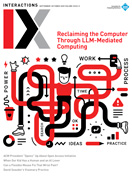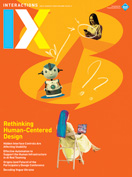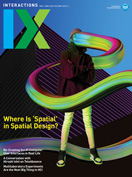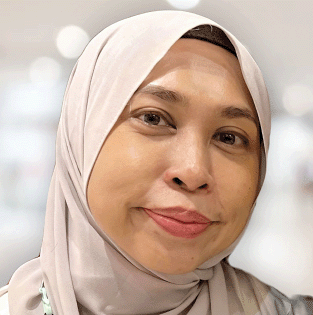Authors:
Masitah Ghazali
What is your current role?
I'm a senior lecturer at the Faculty of Computing at Universiti Teknologi Malaysia. I'm part of the Department of Emergent Computing, and I teach courses such as HCI and software engineering and innovation.
My current research focuses on emotion recognition using brain-computer interfaces and making data analytics more actionable, especially in contexts where humans remain an important part of the loop.
What inspired you to forge a career in HCI?
What feels like a lifetime ago, during my undergraduate studies in software engineering, I came across HCI—and it immediately stood out. Unlike the more technical subjects, HCI wasn't dry; it brought in the human side of technology, which fascinated me. From that moment, I knew I wanted to be involved in something that connected people and tech in meaningful ways. Later, when I had the opportunity to further my studies while teaching, I chose to focus my research on HCI. During that time, I was fortunate to work with Alan Dix, whose thinking and approach to HCI deeply influenced how I view the field—not just as a technical domain but also as a space for critical, creative, and human-centered inquiry.
Volunteering, for me, is about building bridges and finding shared purpose, even when we come from very different places.
Which volunteering roles are you taking on right now?
I helped establish the Kuala Lumpur ACM SIGCHI Chapter in 2017 and served as chair for two consecutive terms. I don't hold a formal position with the chapter now, but I continue to serve as an advisor. I'm also part of the ACM SIGCHI Chapters Committee, which I joined in 2022.
What drew you to take on this role?
Having served as Kuala Lumpur SIGCHI chair, I realized how important it is for voices from Southeast Asia and the Global South to be heard more clearly in the international HCI space. I wanted to contribute to growing chapters globally while ensuring that local impact remains at the heart of what we do.
What are you working on right now?
Together with Jeni Paay, the current vice president of Chapters, and the rest of the team, I'm trying to understand the ecosystem of SIGCHI chapters better. For long-standing chapters, we ask what has worked well and how those practices might be shared. For newer or emerging chapters, we explore their challenges and how other chapters can support them by providing guidance and sharing resources.
What is one thing you'd like to see happening in the SIGCHI community?
I'd love to see deeper, more reciprocal collaboration between researchers and practitioners from the Global North and South. Too often, research from the South is framed as case studies or "localized" issues, when in fact these perspectives offer unique design wisdom and ethical insight that could challenge dominant narratives in HCI. There's an opportunity to create spaces that truly welcome diverse worldviews—not as tokens, but as cocreators of the future of our field.
I also hope for more support for interdisciplinary and community-grounded work. As we tackle complex problems—from aging populations to ethical AI—we need to move beyond silos and bring in voices from public health, education, social sciences, and the everyday lived experiences of people.
Ten years from now, what issues do you imagine the HCI community may be confronting?
I think we'll be grappling with the consequences of automation and AI-driven design—not just technically but also morally. Whose values get encoded into systems? Who gets excluded or misunderstood? And how do we ensure that human dignity remains central? These won't be just technical questions; they'll be deeply cultural and political ones too.
We may also see more tension between global scalability and local relevance. Designing for billions might sound impressive, but it risks flattening the rich variety of human needs. The real challenge will be finding ways to grow without losing the sensitivity and flexibility that make our work meaningful.
What excites you about the future of our field?
I'm excited by the possibilities of HCI to do good, not just in terms of making systems more usable but also in transforming how people relate to one another, to their communities, and to knowledge. HCI can be a powerful lens to reimagine more equitable futures, especially if we stay grounded in empathy, ethics, and inclusion.
What advice would you give a young colleague at the start of their professional career?
Find a good mentor, someone who can guide you technically and also help you see the bigger picture. A mentor can help you grow with clarity, broaden your perspective, and plan your career more strategically. You don't have to figure it all out alone.
What is one thing you've gotten wrong about tech?
I used to assume that technology should always make life easier. But over time, I've come to realize that, as human beings, we still need challenges and difficulties. They shape our growth and resilience. If tech tries to remove all friction, it risks taking away what makes us human. So rather than doing everything for the user, technology should support us where it matters most, while still preserving our values, ability to choose, and trust in one another.
Is there a vision of the future that you had as a child that still persists?
I was always fascinated by those magical moments when something could transform into something else. It felt like pure wonder. I grew up watching shows like Jem and the Holograms, and "Rosey the Robot" (the first episode of the first season of The Jetsons), imagining what it would be like to live in a world like that. That sense of possibility has stayed with me. And looking at how technology is evolving today, I do feel like we're slowly getting there—the future I once imagined doesn't feel so far away anymore.
Would you like to share any concluding thoughts?
Being a woman volunteer in SIGCHI Chapters, especially one from Southeast Asia, has been both rewarding and humbling. At first, it was challenging—not just balancing time zones but also navigating different values and ways of working. Sometimes you're unsure if your views are coming across the right way in a different cultural context.
But being part of the global SIGCHI community has allowed me to see the beauty and complexity of this diversity. It's also reminded me how important it is for us, especially women in leadership or volunteer roles, to be visible, not for recognition, but so that others can imagine themselves stepping forward too.
I'm especially grateful to Eunice Sari, whom I met many years ago at OzCHI. While I already knew of ACM SIGCHI, she was the one who encouraged me to get involved, especially with its chapters, communities, and volunteering efforts. That small nudge helped me see how I could contribute more meaningfully, and it's had a lasting influence on the direction I've taken since.
I'm also thankful for a supportive family that understands why I do this work. Volunteering, for me, is about building bridges and finding shared purpose, even when we come from very different places.
Masitah Ghazali is an associate professor at Universiti Teknologi Malaysia and an advisor to the Kuala Lumpur ACM SIGCHI Chapter. Her research focuses on HCI, persuasive technology, and emotion-aware systems. She is dedicated to promoting inclusive design and the development of technology that benefits society. [email protected]
Copyright 2025 held by owner/author
The Digital Library is published by the Association for Computing Machinery. Copyright © 2025 ACM, Inc.









Post Comment
No Comments Found